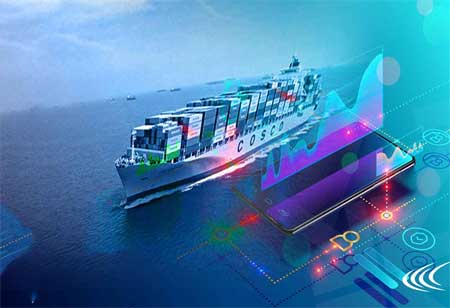THANK YOU FOR SUBSCRIBING
THANK YOU FOR SUBSCRIBING

By
Logistics Transportation Review | Wednesday, June 12, 2024
Stay ahead of the industry with exclusive feature stories on the top companies, expert insights and the latest news delivered straight to your inbox. Subscribe today.
This shift allows organizations to convert system costs from capital to operating expenses, ensuring they always operate on the latest generation of their chosen systems.
Fremont, CA: The rise of digital technologies significantly transforms the supply chain, enhancing productivity, resilience, and visibility and potentially driving further improvements by 2024 and beyond.
Here Are Five Developments To Keep An Eye On In The Coming Years.
1. Analytics Take Center Stage
Advanced data analytics revolutionizes supply chain management, particularly in third-party logistics providers like DHL Supply Chain. Machine learning analyzes historical order patterns and customer behavior, enabling accurate forecasts and demand preparation. However, data siloed in many supply chains presents expansion opportunities, allowing for a shift from reactive to proactive and predictive management.
2. The Cloud Creates Opportunity
Warehouse management system providers are introducing cloud-based software-as-a-service (SaaS) models to modernize outdated systems. This shift allows organizations to convert system costs from capital to operating expenses, ensuring they always operate on the latest generation of their chosen systems. The SaaS model also enables easier integration of data- and processing-intensive applications into supply chain systems, such as generative AI, thereby reducing barriers to technology modernization and ensuring the latest generation of management platforms.
3. AI Expands Its Role
Machine learning and predictive analytics are already enhancing supply chain operations. Still, other forms of AI, such as cognitive computing and generational AI, can automate dynamic processes like forecasting, inventory management, and route optimization. Due to data security concerns, organizations are increasingly building tools to inform planning, forecasting, and risk management, as they are hesitant to use publicly accessible tools.
4. Robots Take Human Form
The next generation of humanoid robots may resemble human workers in warehouses despite their advanced technology. Despite performing impressive activities like parkour, these robots are programmed to operate in a controlled environment. As AI and robotic technologies advance, the next generation of robots may have the intelligence to work within the warehouse, enabling easier-to-automate processes like mobile carton picking.
5. Orchestration Is On The Horizon
In the future, the concept of orchestration in the supply chain will become more prominent as it represents the final frontier of digitalization. A fully orchestrated supply chain uses digitalization technologies to create accurate inbound forecasts and balance and optimize all resources, including people, systems, and automation. Initial efforts focus on orchestrating the activities of multiple automation systems within a specific environment.
I agree We use cookies on this website to enhance your user experience. By clicking any link on this page you are giving your consent for us to set cookies. More info

However, if you would like to share the information in this article, you may use the link below:
https://www.logisticstransportationrevieweurope.com/news/supply-chain-s-tech-leap-nwid-1016.html





